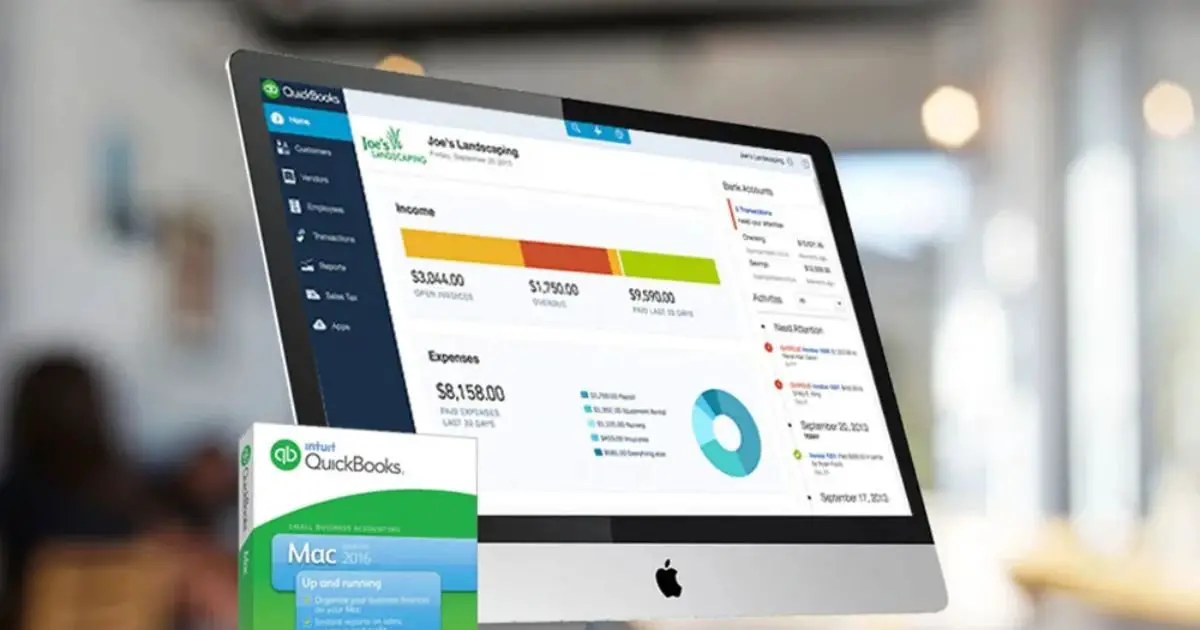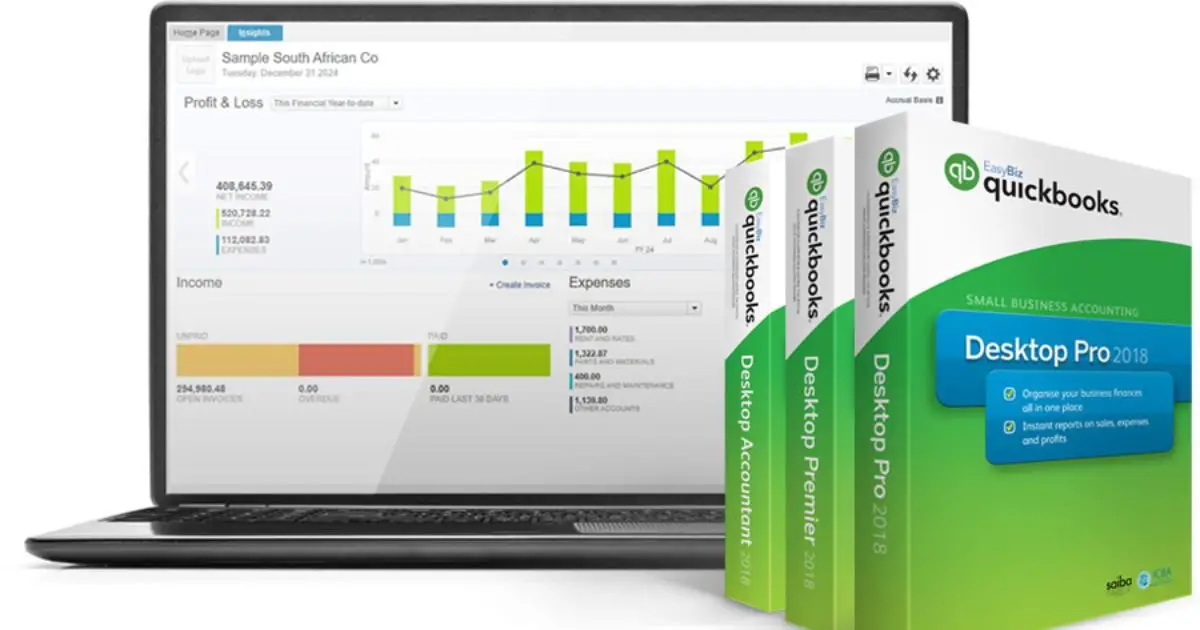Maintaining accurate records of your services and payments is crucial to your business’s success as a photographer. Keeping track of costs, managing invoices, and organizing your finances are all made simple using QuickBooks. You can monitor your revenue, client payments, and operating expenses by entering your photographic services into QuickBooks. You may save time and maintain organization by following this article, which will take you through the easy processes of setting up, tracking, and managing your photographic services in QuickBooks.
Why Tracking Photography Services in QuickBooks Is Essential
Tracking your photography services in QuickBooks is vital to keeping your business organized and financially healthy. Here’s why:
- Organized Financial Records: QuickBooks helps you keep everything in one place, making it easier to monitor your income, expenses, and overall business performance.
- Simplified Tax Filing: By correctly categorizing your services and expenses, tax season becomes less stressful, and you’re less likely to miss out on deductions.
- Better Cash Flow Management: With QuickBooks, you can easily track incoming payments and outgoing expenses, helping you manage your cash flow and budget more effectively.
- Efficient Invoicing and Payment Tracking: QuickBooks lets you quickly create invoices, send them to clients, and track payments, ensuring you stay on top of your earnings and overdue payments.
Using QuickBooks streamlines your business and saves time, allowing you to focus more on photography and less on paperwork.
Setting Up Photography Services in QuickBooks

Getting started with tracking your photography services in QuickBooks is simple. Here’s how to set it up:
- Create a New Service
- Go to the “Sales” menu and select “Products and Services.”
- Click the “New” button and choose “Service” from the dropdown.
- Name your service (e.g., “Wedding Photography” or “Event Photography“).
- Add a Description
- Enter a description of your service. This can include details like what’s included in the package or hourly rates.
- Be clear and concise to make invoicing easier later.
- Set a Rate
- Input your standard rate for the service. You can set a flat fee or hourly rate, depending on how you charge clients.
- You can also leave the rate blank if you prefer to set it manually for each client.
- Assign an Income Account
- Choose an income account to associate with the service, like “Sales of Services” or “Photography Income.” This helps categorize your earnings for easier tax reporting.
- Save the Service
- Once everything is completed, click “Save and Close” to add the service to your list.
Setting up photography services in QuickBooks will streamline your invoicing process, making tracking your earnings easier and ensuring accuracy.
Creating Invoices for Photography Services
QuickBooks makes it easy to create professional invoices for your photography services. Follow these steps:
- Go to the Invoicing Section
- From the dashboard, navigate to the “Sales” menu and select “Invoices.”
- Click the “Create Invoice” button to begin.
- Select Your Client
- You can select an existing client from the customer list or add a new client by entering their details (name, email, address).
- Make sure all client information is accurate for smooth communication.
- Add Photography Services
- In the “Product/Service” field, select the photography service you want to invoice for (e.g., “Portrait Session” or “Wedding Photography”).
- QuickBooks will automatically fill in the description and rate you set earlier, or you can adjust them for each specific client.
- Set the Invoice Date and Terms
- Choose the invoice date and set payment terms (e.g., Net 30, due upon receipt). This will help establish clear expectations with your clients.
- Add Notes or Customization
- Include any additional notes, such as a thank-you message or instructions for payment.
- You can customize your invoice with your business logo and design preferences to align with your brand.
- Send the Invoice
- Once the invoice is complete, you can save it for later or email it directly to the client from QuickBooks.
- Track Payments
- After sending the invoice, QuickBooks will automatically track when the payment is received and update your records. If a client is late, you can send a payment reminder directly from QuickBooks.
By following these steps, you can create and send invoices efficiently, ensuring timely payments for your photography services while maintaining professionalism.
Recording Photography Expenses in QuickBooks

Tracking your photography expenses in QuickBooks is crucial for managing your finances and maximizing tax deductions. Here’s how to record the costs effectively:
- Navigate to the Expenses Section
- Go to the “Expenses” tab from the dashboard and click “New Transaction.”
- Select “Expense” to begin recording your costs.
- Choose a Vendor
- In the “Payee” field, select the vendor you purchased from (e.g., a camera store or software company), or add a new one if they’re not in the system.
- Assign a Payment Account
- You can choose the account used to make the purchase, such as your business credit card or bank account. This keeps your spending organized.
- Enter Expense Details
- Input the date of the expense, the amount spent, and a brief description (e.g., “New camera lens,” “Editing software subscription”).
- Categorize the expense under the appropriate category, such as “Supplies,” “Software,” or “Equipment.” This helps with tax deductions and expense tracking.
- Add Receipts
- Attach a digital copy of the receipt to the expense entry for easy record-keeping. You can upload or snap a photo of the receipt and save it with the transaction.
- Assign a Class or Project (Optional)
- If you’re working on a specific project or client job, assign the expense to that project or class to track costs related to individual shoots or clients.
- Save the Expense
- Once all the details are filled in, click “Save and Close” to record the expense.
By consistently recording your photography expenses in QuickBooks, you’ll maintain accurate financial records, simplify tax preparation, and see where your money is going.
Managing Photography Client Payments in QuickBooks
Tracking client payments in QuickBooks is essential for ensuring you get paid on time and keeping your finances in order. Here’s how to manage costs for your photography services:
- Record a Payment
- Go to the “Sales” menu and click “Receive Payment.”
- Select the client who made the payment from the customer list, and QuickBooks will display any open invoices for that client.
- Apply the Payment to an Invoice
- Choose the invoice to which the payment applies. If the client paid multiple invoices, you can select multiple invoices and split the payment across them.
- Input the amount received, payment date, and payment method (e.g., credit card, bank transfer, or cash).
- Deposit the Payment
- Select the appropriate deposit account (like “Checking”) if the payment went directly to your bank account.
- If you’re waiting to deposit the payment (e.g., cash or check), select “Undeposited Funds” and deposit it later.
- Tracking Partial Payments
- If a client made a partial payment, enter the amount they paid, and QuickBooks will automatically update the remaining balance.
- You can send a payment reminder for any outstanding balance directly through QuickBooks.
- Issue a Payment Receipt
- Once the payment is recorded, you can send a payment receipt to the client by email. This adds a professional touch and confirms that their payment was received.
- Monitor Outstanding Invoices
- Use the “Sales” overview to track all outstanding invoices. QuickBooks shows which clients still owe money and how long the payment has been overdue.
- You can easily send payment reminders or follow-up emails for unpaid invoices.
- Reconcile Payments with Bank Transactions
- If you connect your bank account to QuickBooks, payments will automatically match the corresponding bank deposit, making reconciliation easier.
- This ensures your books are accurate and all payments are accounted for.
By managing photography client payments in QuickBooks, you’ll stay on top of your cash flow, ensure timely payments, and maintain a clear financial picture for your business.
Generating Reports to Analyze Your Photography Business
QuickBooks offers robust reporting tools to help you understand your photography business’s financial performance. Here’s how to generate and use these reports:
- Profit and Loss Report
- Navigate to the “Reports” menu and select “Profit and Loss.”
- This report shows your total income and expenses over a specific period, helping you understand whether your business is profitable.
- Use it to analyze which photography services generate the most revenue and where you might need to spend more money.
- Sales by Client Summary
- This report provides a breakdown of your sales by client.
- It helps identify your top clients, allowing you to focus on strengthening those relationships or offering them tailored services.
- It also highlights clients who may need follow-ups for additional services.
- Expenses by Vendor Summary
- You can use this report to see how much you spend with each vendor, such as camera equipment suppliers or software providers.
- It helps identify opportunities to negotiate better deals or reduce unnecessary expenses.
- Accounts Receivable Aging Report
- This report shows which clients owe you money and how long the outstanding payments are.
- It helps manage overdue invoices and improve cash flow by following up on late payments.
- Cash Flow Statement
- The cash flow statement helps track the movement of money in and out of your business.
- It gives you a clear picture of how well you manage your income, expenses, and overall liquidity, ensuring you have enough cash to cover upcoming expenses.
- Sales by Product/Service Report
- This report shows which photography services (e.g., weddings, portraits, or event shoots) generate the most revenue.
- It helps you decide which services to promote or invest more resources in.
- Income by Customer Report
- This report details the income generated by each customer.
- It helps you recognize your most profitable clients and adjust your marketing strategies to target similar clients.
- Customize Reports for Specific Needs
- QuickBooks allows you to customize reports based on specific periods, clients, or services.
- This flexibility helps you analyze your photography business in ways that align with your goals and strategies.
By regularly generating and reviewing these reports, you can better understand your photography business’s financial health, make data-driven decisions, and find opportunities to grow and improve your services.
Automating Recurring Photography Services in QuickBooks
If you offer recurring photography services, such as monthly event shoots or subscription-based services, automating these invoices in QuickBooks saves you time and ensures you get paid on schedule. Here’s how to set up and manage recurring transactions:
- Create a Recurring Invoice Template
- Go to the “Sales” menu and select “Invoices.”
- Please create a new invoice by selecting the client and regularly adding the photography services they receive.
- Once the invoice is set, click “Make Recurring” to automate the process.
- Set the Recurrence Schedule
- In the “Recurring Invoice” screen, you can choose how often the invoice will be sent (e.g., weekly, monthly, or quarterly).
- Set a start date for the first invoice and an end date if applicable (or leave it open for ongoing services).
- Choose the Payment Terms
- Specify the payment terms (e.g., Net 30 or Due on Receipt) to ensure clear payment deadlines.
- You can also set up reminders for overdue payments if necessary.
- Add Customization and Notes
- Include any custom messages, such as a thank-you note or a description of what the recurring service includes (e.g., “Monthly Corporate Event Photography”).
- This helps maintain transparency and professionalism with your clients.
- Track Recurring Invoices
- QuickBooks will automatically generate and send the invoices based on your set schedule.
- You can view all active recurring transactions under the “Recurring Transactions” tab in the “Gear” icon menu, allowing you to manage and adjust them as needed.
- Automating Payment Collection (Optional)
- If you have set up automatic payment collection (e.g., through ACH, credit card, or PayPal), QuickBooks can also process payments automatically when the invoice is due.
- This reduces the need to chase down payments and keeps your cash flow steady.
- Review Recurring Payments
- Review your recurring invoices to ensure all services are accurately billed and clients pay on time.
- Adjust the pricing, services, or schedule if the client’s needs change.
By automating recurring photography services in QuickBooks, you can streamline your invoicing process, reduce manual work, and ensure consistent cash flow, freeing up more time to focus on your photography business.
Conclusion:
Organizing your photography services in QuickBooks is essential to running a profitable and effective business. You can track your spending, monitor your financial performance, and expedite your invoicing using QuickBooks’s features and capabilities. Creating concise service descriptions, classifying your products, automating repetitive processes, and creating reports regularly will save you time and give you essential information about the state of your company.
A well-organized financial structure allows you to devote more time to your love of photography while ensuring your company’s profitability. By heeding this article’s advice and best practices, you may increase productivity, profitability, and success in your photographic endeavors.






